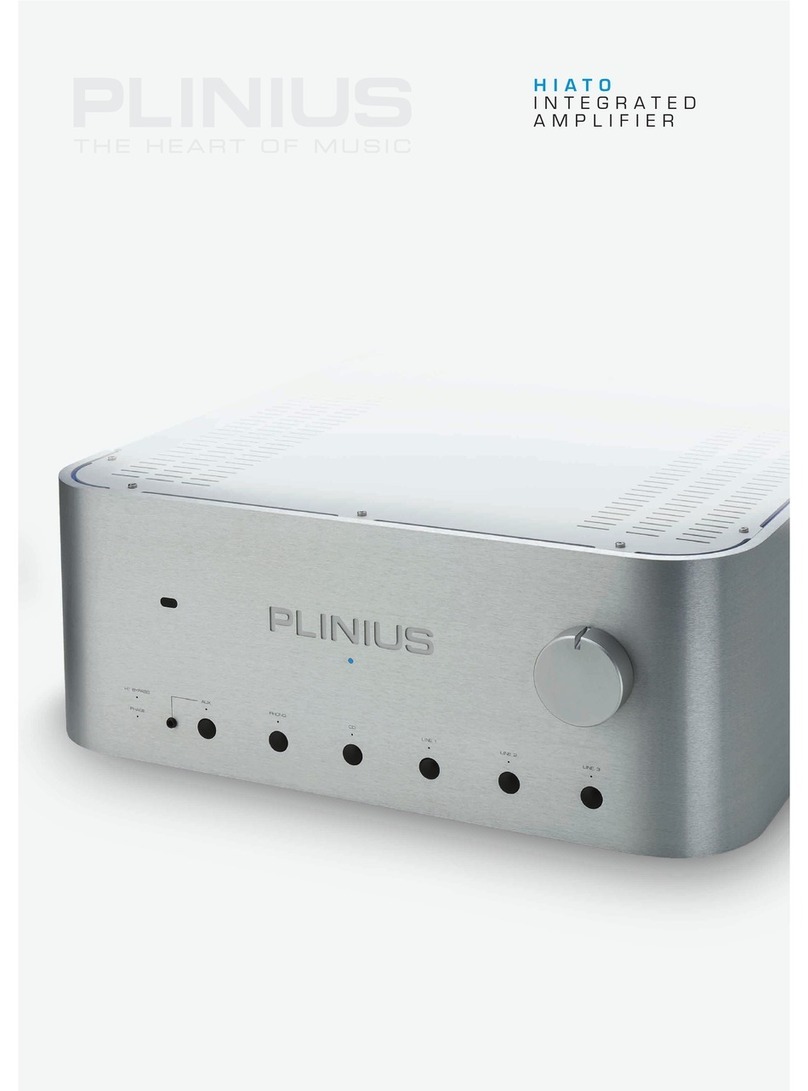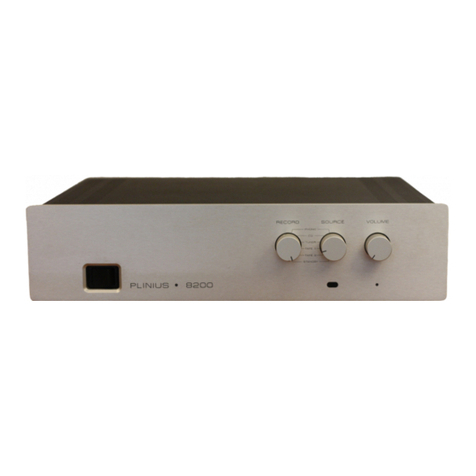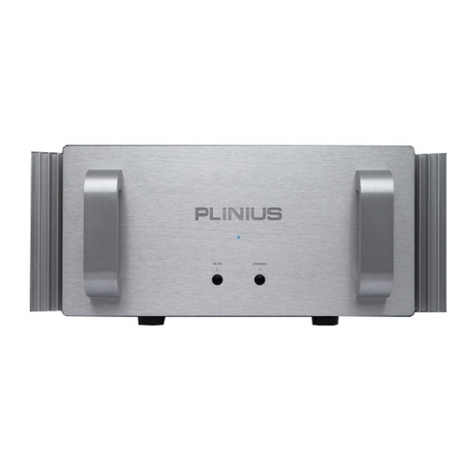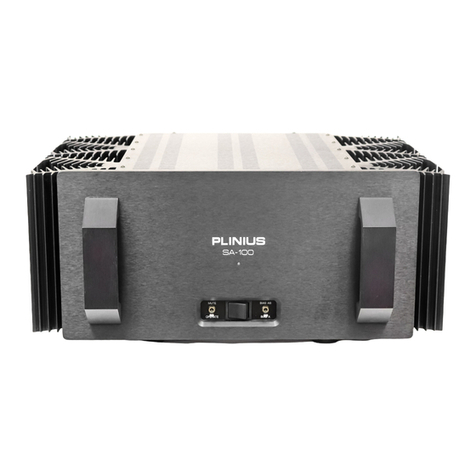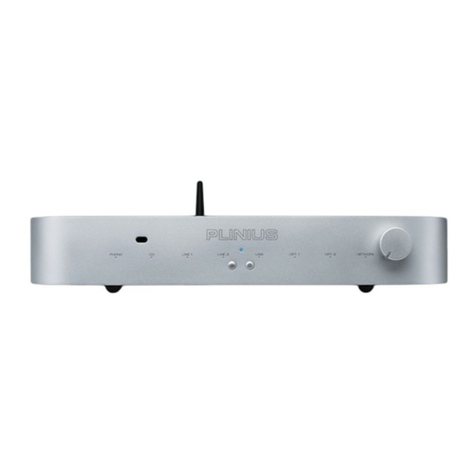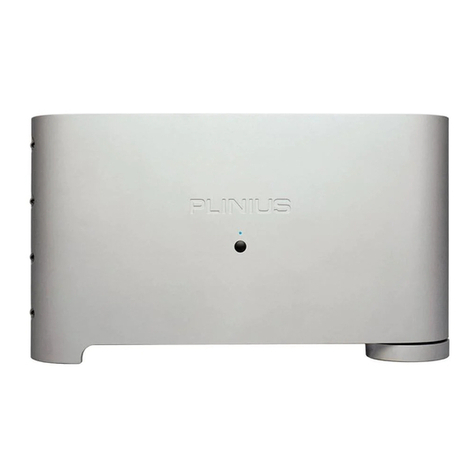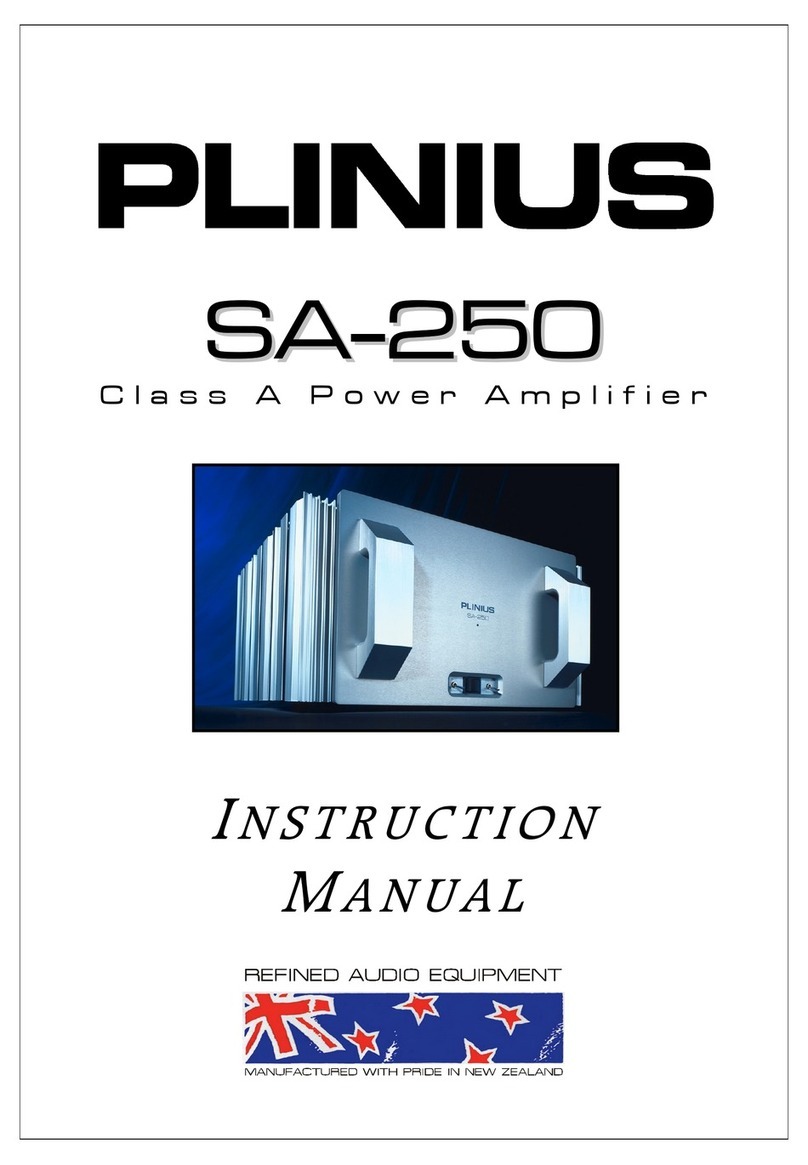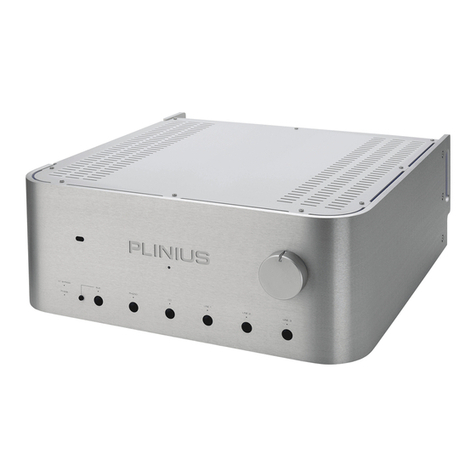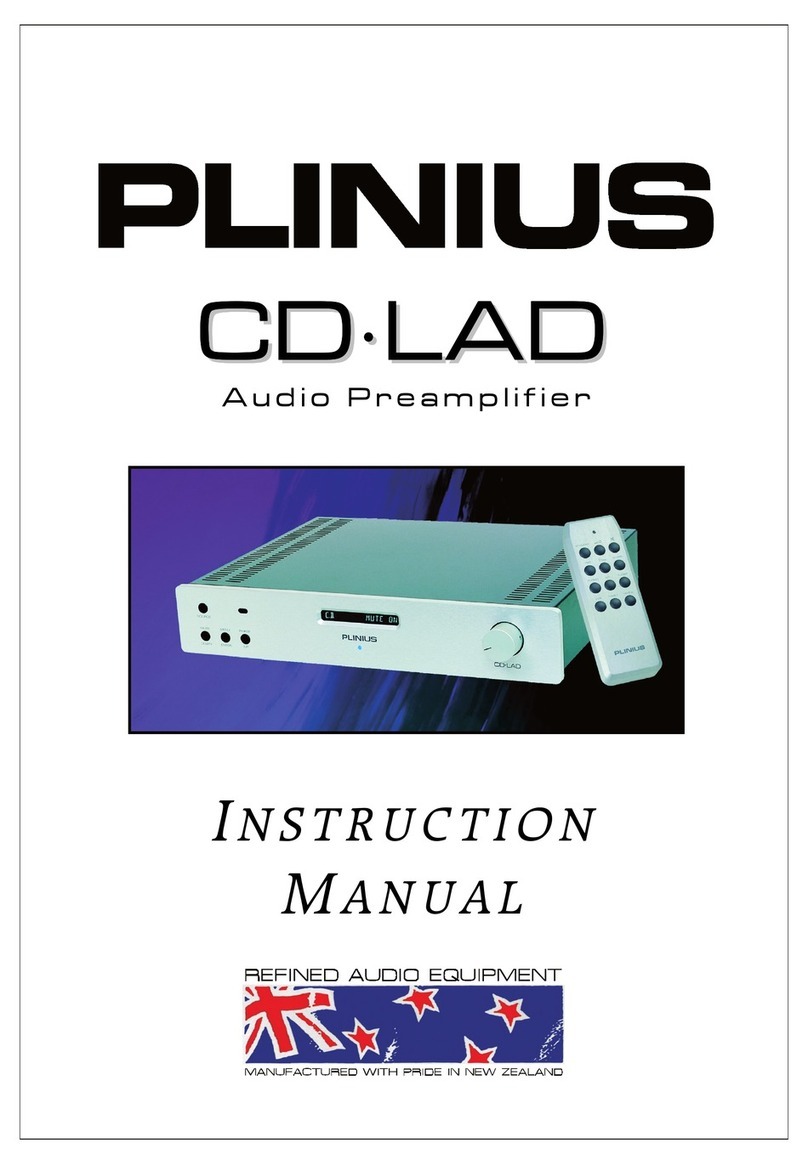
PLINIUS REFERENCE A-150 7
CLASS AB
This position reduces the bias on the output stage to operate the amplier in Class AB.
This is a bias conguration used by the majority of high delity ampliers. In Class AB the
Reference A-150 produces very high quality sound, suitable for all occasions where critical
listening is not a priority. A dual benet exists in that this facility provides the user with a
much cooler operating temperature, and a much reduced demand on the mains electricity
supply, particularly at idle while the amplier is not reproducing music. This feature allows
you to leave the Reference A-150 switched ON at all times, rendering the amplier ready
for use and requiring only a few minutes of warm-up in Class A before the very best of the
amplier’s sonic qualities may be experienced.
CLASS A
This position provides Class A bias to the output stage therefore ensuring the optimum
performance of the amplier during all listening events.
Class A ampliers run hotter than Class AB ampliers, hence our specially designed and
distinctive heat sinks. Operating the amplier in Class A necessitates two precautions that
should be observed.
• On switching to Class A, the temperature of the amplier will quickly increase and the
amplier will become quite hot. Ensure that you have left adequate space around the
amplier for ventilation.
• The power required from the mains supply in Class A is approximately 1,000 watts,
similar to a small electric heater. The amplier should not be connected to a wall outlet
that is shared with other heavy current appliances such as heaters or electric motors. If
in doubt, check with your Plinius dealer for advice.
WHY CLASS A IS BETTER
Class A has always been regarded as the perfect operating mode for audio ampliers. Many
leading amplier designers and manufacturers world wide recognise that a well designed
Class A circuit has inherently lower distortion than any other design.
Class A circuit topology is one in which the total current the amplier is capable of
delivering, is kept owing in the circuit regardless of demand. In a conventional or Class AB
amplier circuit this current ow varies when demand varies. Furthermore, as current varies,
the voltage on the power supply rails (as seen by the output stage) varies too.
In a Class A circuit, current draw should be constant therefore there is an absence of the
power supply modulation common in Class AB design ampliers. Pinpoint images, tonal
clarication, inter-transient silence, more readily dened dynamic shadings, inner detail and
authority are all inherent advantages of good Class A design.

